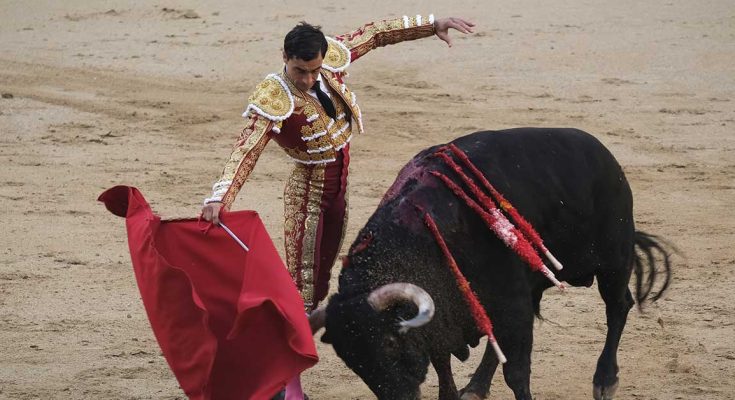The world of bullfighting is no stranger to danger, but tragedy struck with brutal finality when Spanish matador lost his life in the ring. During a routine performance in the French town of Aire-sur-l’Adour, a misstep with his cape left him exposed to a fatal blow. The bull, weighing more than 500 kilograms, took advantage of the fall and gored the matador in the chest. Fandiño was rushed to hospital but died shortly after. His haunting final words—“Hurry up, I’m dying”—have since echoed across headlines and social media.
The death of this veteran matador has reignited global debate. Some mourn the loss of a cultural icon. Others use the moment to call out the dangers and ethics of bullfighting. His passing shines a fresh spotlight on an age-old sport walking the line between revered tradition and public controversy.
One Misstep, One Life Lost
On that fateful day in Aire-sur-l’Adour on June 17, 2017, the seasoned matador was performing as he had many times before. The crowd watched as he gracefully controlled his cape, luring the bull in close. But then, in an instant, he tripped on the fabric that had always been his tool of mastery.

The fall left him vulnerable. With no time to recover, Fandiño was gored in the right lung by the charging animal. Onlookers gasped. Other matadors rushed to help. Medical personnel tried to stabilize him on the scene before transporting him to hospital.
Despite their best efforts, the injuries proved too severe. Fandiño died en route or shortly after arriving. Witnesses say he remained conscious for a time, whispering his final plea: “Hurry up, I’m dying.” His words revealed the urgency and pain of those final moments, adding a deeply human touch to a public tragedy.
Iván Fandiño: A Career of Bravery and Blood
Fandiño was not just a performer—he was a matador who embodied courage, precision, and passion. Born in Orduña, Spain, he grew up immersed in the traditions of bullfighting. Over the years, he built a reputation as a fighter who never backed down. Fans admired his willingness to face the fiercest bulls, even at great personal risk. Others say he was a fool for participating in such a gruesome sport.
His career spanned many years and included countless dramatic performances across Spain and France. Injury was no stranger to him, yet he always returned to the ring. He believed in the ritual of the fight and in the art that matadors claim as their heritage.

Offstage, Fandiño was a devoted husband and father. Friends described him as humble and committed, both to his craft and his loved ones. His death has left a void not only in the bullfighting community but also in the lives of those who knew him personally.
The Art and Anguish of Bullfighting
To supporters, bullfighting is more than sport. It is an artistic, almost spiritual display where the matador engages in a deadly dance with the bull. They argue that it is a test of bravery, poise, and skill, a tradition passed down through generations.
However, critics argue the opposite. They say the practice is brutal and outdated, highlighting the suffering of both animals and performers. The death of a matador, they claim, only underscores the needless danger woven into the spectacle.
Fandiño’s passing intensified the debate. Animal rights groups pointed to the event as yet another reason to ban bullfighting. In contrast, traditionalists honored his bravery, calling him a fallen hero. The arguments clashed across social media, news outlets, and public forums in the days that followed.
Final Words That Captivated a Nation
The phrase “Hurry up, I’m dying” became more than just a final statement. It became a headline, a viral moment, and a national talking point. Spoken by a matador who had lived through countless close calls, the words revealed an undeniable truth. No amount of skill can erase the risks of this tradition.
These last words added emotional weight to the tragedy. They painted a picture of a man aware of his fate, yet still fighting to survive. For many, the phrase transformed the story from one of performance to one of profound humanity.
The emotional reaction was immediate. Fans posted tributes, journalists penned essays, and video clips circulated widely. His death, and the words he left behind, became a rallying cry for change and reflection within the bullfighting world.
Legacy of a Fallen Matador
Iván Fandiño’s legacy is one of risk, reverence, and raw dedication. To his supporters, he was one of the last great matadors, committed to a life that balanced art with danger. His style, presence, and fearless performances earned him a permanent place in the sport’s history.
But his death has also sparked new momentum among critics. Activists argue that no tradition is worth a human life. Some nations have already banned bullfighting. Others may follow in response to this latest tragedy.
Regardless of stance, Fandiño’s story forces a difficult conversation. Can a tradition so closely tied to national identity evolve with modern values? And if not, what price are we willing to pay to keep it alive?
Just after the accident, the Spanish government posted a statement mourning the death of Fandiño. King Felipe and Queen Letizia of Spain also shared their condolences on Twitter, and called Fandiño a “great figure of bullfighting.”
A Tragedy That Transcends the Arena
The death of Iván Fandiño is more than just a headline. It is a sobering reminder of the real risks behind the art of bullfighting. For those who admire the tradition, he died doing what he loved. For those who oppose it, his death reinforces why the sport must change, or end altogether.
As the debate continues, one fact remains clear: a talented matador is gone. His cape now rests, not just as a symbol of flair, but of a life lived on the edge and a tradition that may soon have to face its reckoning.



